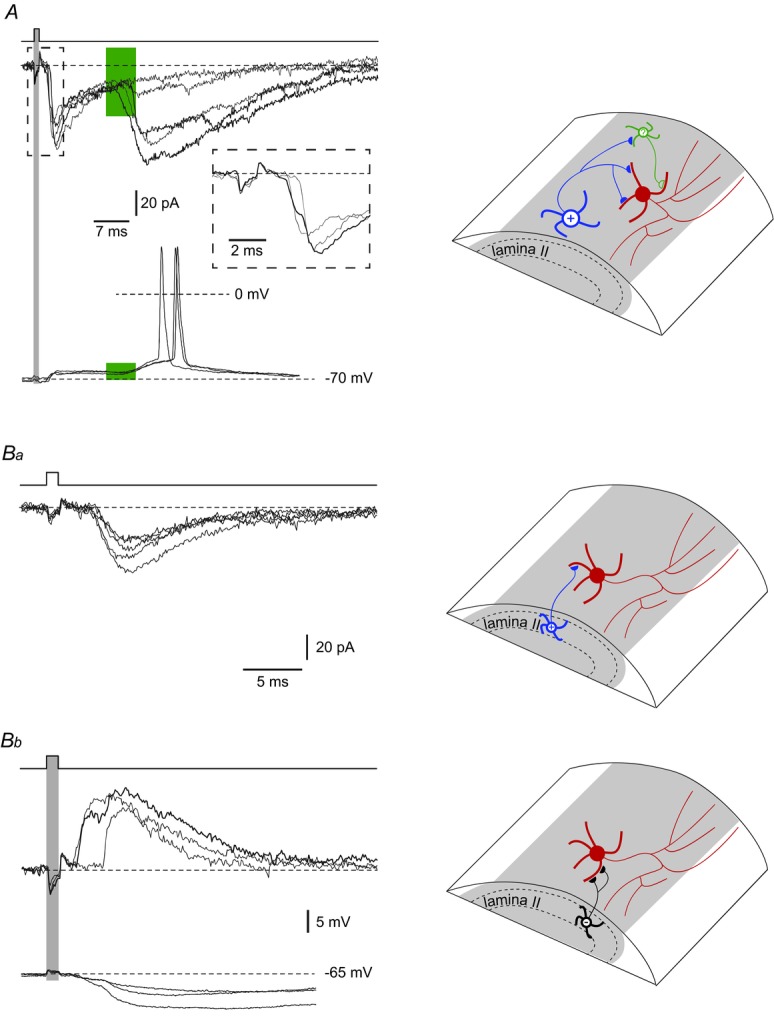Figure 6.

A, EPSCs evoked in an LCN by stimulating another lamina I neurone. The LCN was voltage-clamped at −80 mV. The short-latency monosynaptic EPSC had two components (inset). The latency variation of the disynaptic EPSC, generated via an intercalated neurone, is indicated in green. In current-clamp mode, this LCN of rhythmic firing type was hyperpolarized to −70 mV to stop intrinsic discharge. Note that the disynaptic EPSP augmented membrane depolarization induced by the monosynaptic EPSP. Ba, a single-synapse excitatory input to an LCN from a lamina II excitatory interneurone. Consecutive EPSCs (n = 5) were recorded at −80 mV. Bb, monosynaptic input to an LCN from a lamina II inhibitory interneurone. The inhibitory interneurone formed two direct synapses on the LCN as judged from the two components on the rising phase of the IPSC recorded at −60 mV. In current-clamp mode, the two-component monosynaptic IPSP was evoked by stimulating the same presynaptic neurone.
